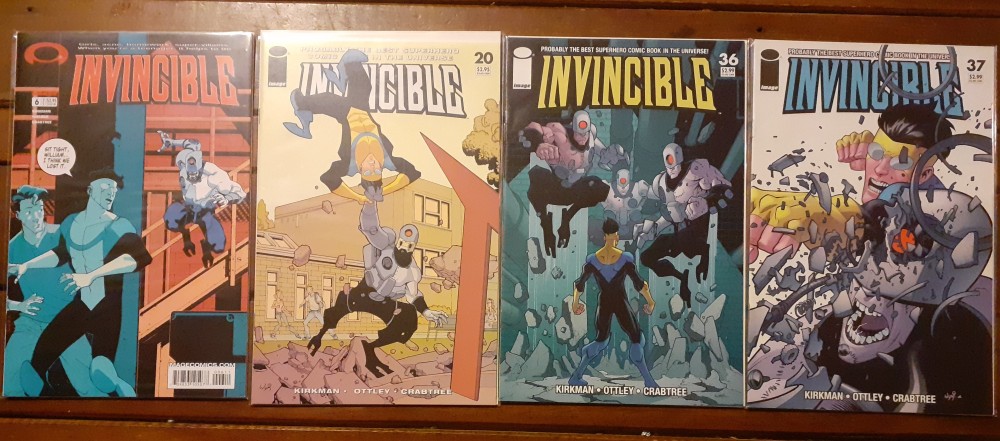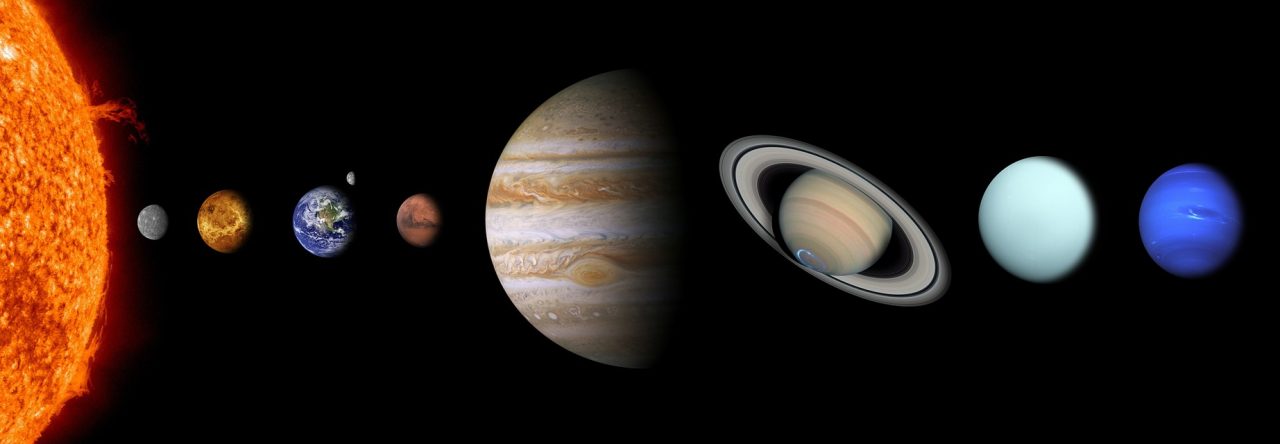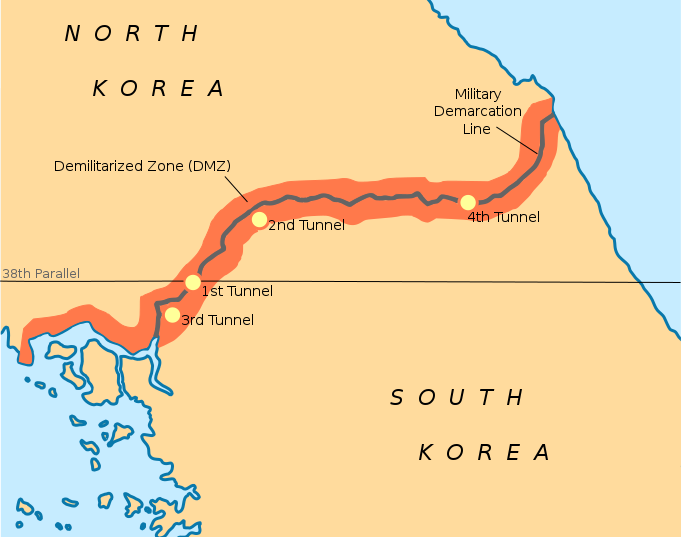Now before I start on my small rant about Invincible, I want to take the time to explain that this blog is going to be the first of many, based on certain comic books. These comic books will be either titles I am currently reading or titles that I have read in the past, even though the series has finished. Sweet?
Ok, I want to talk about Invincible. Why? Well, it’s mainly for two reasons. The first is that the book is amazing and second, there is a certain TV show coming out in March, so I thought I might get ahead of the curve on this. 1
I realise when talking about a movie or book, there tends to be spoilers. So for anybody that has not read Invincible, I will try to make this as spoiler free as I can. Sound fair?
Invincible debuted in Invincible #1 in January 2003, from Image Comics. 2 It was created by Robert Kirkman and Cory Walker, with Kirkman as the writer and Walker working on the pencils. Now you may be thinking “Robert Kirkman? Isn’t he that Walking Dead guy?” Yes, they are the same person, he co-created both of them. 3
Invincible ran for 144 issues, along with some extra issues. Kirkman was the only writer for the series, with Walker being the artist for #1-7, #127-132. All the other issues were drawn by Ryan Ottley, which was 127 issues over 14 years.
Now for the plot. Invincible is about a high school student named Mark Grayson. Mark is the son of Omni-Man, one of the world’s most beloved superheroes. 4 Mark grows up waiting for his superpowers to activate; so basically when other kids are running around pretending they have superpowers, he is annoyed that he doesn’t have them yet.
Eventually for Mark; and also for the reader, his powers emerge. This means Mark can finally become a superhero like his father. Mark now has everything he has ever wanted; superpowers, a costume, a superhero name and even some superpowered friends and enemies. Also, Mark’s costume is yellow, blue and black; which to me, is quite original.
However, because Mark’s powers have emerged, it sets off a chain of events that puts Mark and the reader on a path, that nobody sees coming. Spoilers!! Also, I think I read somewhere that describing Invincible was like if Peter Parker the teenager, had Clark Kent’s powers. Cool concept.
The funny thing is, the first time I had heard of Invincible was in 2006. I was reading Wizard and it mentioned that Invincible was that title for the month. 5
A few months later, I was standing in my old comic book shop, when I noticed the Invincible section in one of boxes. I picked up Invincible #0, then I read the trades through the library and liked what I saw. After going on a national and international hunt for back issues, I officially starting reading Invincible as a monthly title in June 2007 with #42.
I have Invincible #0-144; plus Invincible Returns #1; Image Comic Summer Special FCBD 2004; and Marvel Team-Up # 14, where Invincible meets Spider-Man. I told you I was a geek, so don’t be surprised!
So…why do I like Invincible? Let’s start with the writing. I think Kirkman said at some point during the run, that Invincible was his love letter to the genre of superhero comics. I can understand that, because Invincible has been the longest series I have ever collected, based on a single character. 6 It’s a phenomenal series!
One appealing factor to enjoying Invincible, was the fact that you could enjoy a monthly title about a superhero, by getting on board at the ground floor, so to speak. Having only being published in 2003, you did not have the baggage of 50 years plus of stories to grapple with. No offense to Marvel and DC.
Anyway, the main characters are fleshed out, as well as the secondary characters. From Debbie (Mark’s mother) to Monster Girl to Atom Eve to Oliver and to…Thragg.
This of course brings us to the villains of the series. Mark does have a rogues gallery, but they are different to say Batman’s or Spider-Man’s. They turn up to made Mark’s life a nightmare, however Mark does not have never-ending battles with them. Yes, the likes of Angstrom Levy and Powerplex provide personal battles for Mark; just as collective villains do like the Reanimen and ….spoilers!!!
The fact that the title does break the mould with the villains, does place it as a rare category in the industry.
Since Invincible is a comic book, I need to talk about the art. The thing with Walker and Ottley, was that they were not shy when it came to fights. Don’t get me wrong, having Mark spending time with his family and friends, always to me; gave a sense of normality to the title. Mark had problems and issues to solve, which I think drew similarities to Peter Parker’s life outside of the costume.
That being said…the fight scenes. Wow. I say again. Wow. Invincible was one of the first comics that I had seen, that gave readers brutal, bloody and gory superhuman fights. I’m talking about some awful violent scenes like somebody punching through a person, limbs being ripped off, and intestines. A lot of intestines.
For me, the fights were amazing to look at, for the pain staking detail that was applied to each panel; but at the same time, there was a sense of “anybody could die in this book.” And characters did. A lot.
Anyway, without going to much into spoilers, I started reading Invincible at a strange time in my life, and as I grew older, I noticed that Mark and I were on the same journey towards family, not superhuman powers; though that would have be nice.
When it was announced that Invincible was ending with #144, I turned to my wife and started explaining how strange I felt about that. She humoured me, by allowing me to talk about how long Invincible had been in my life and that it was always the very first comic I would read, when my mail orders arrived.
I guess one of the legacies of Invincible for me, is that I currently hold no desire to read any monthly superhero comic book anymore; as in a title named after the protagonist. To me, you can’t top Invincible, though if the right title came along, I would stand corrected. 7 I feel stupid because writing this blog and talking about Invincible, has reminded me what an amazing series it was and the fact that I still miss reading about Mark’s failures and triumphs.
We finally arrive at the point of the Invincible TV series on Amazon Prime Video. When I heard a TV series was going to made, I assumed it was going to be a live action adaptation. After watching the two trailers, I am so happy for three main reasons.
The first reason, is that the show will be animated. This means they can travel to Mars, Viltrum and other worlds, as well as different locations on Earth; and meeting crazy powered characters, without them looking cheap, shoddy or shitty.
The second reason is the animation is based on Walker and Ottley’s art. It’s honestly like reading the comic; I am so grateful, because it looks gorgeous! The third reason is the fight scenes. If the comic is a gauge to measure the fights, then the TV series will blow people away!
As for watching the series, I probably won’t just yet. This is because I can’t afford two streaming channels; but also, it gives me time to wait for the “Second Age of Middle-Earth” series, so I can watch them on a trial. Maybe.
For what it’s worth, I think Invincible is one of a small group of elite comic books and manga, that have stamped their mark on the 21st century, for actually adding to superhero culture, and not taking anything away.
There are many problems in the world right now: climate change, racism, poverty, child abuse, COVID-19 and sadly, the list goes on. Reading a comic book like Invincible will not change or solve any of these issues, but it will put a smile on your face. It’ll make you happy and isn’t that one of the points of life?
So go visit your local comic shop or library and fall into a rabbit hole of half human/Viltrumites, brutal fight scenes and the coolest one-eyed orange alien named Allen, you will ever meet.
Thanks for reading and see you in a fortnight!

Image by Some Geek Told Me
1 Just to be clear, I am generally not ahead in many things, especially fashion or music.
2 Technically the first appearances of Invincible was in Tech Jacket #1 with a preview and a cameo appearance in Noble Causes: Family Secrets #3.
3 Useless piece of information for you: Invincible and The Walking Dead both came out in 2003, but The Walking Dead #1 was released in October, while Invincible #1 was in January.
4 Omin-Man aka Nolan Grayson is a Viltrumite, a native of the Planet Viltrum.
5 Am I the only person to miss that magazine?
6 Though to be fair, the wielder of the Right Hand of Doom, might say something about that.
7 This does not include manga, because One Punch Man and Ultraman kick all different kinds of arse.



You must be logged in to post a comment.